Table of Contents
How can optimizing delivery operations help small businesses stand out from the competition? Selecting the right delivery software for small business plays a crucial role in achieving this goal. Key features include a user-friendly interface that allows every team member, regardless of technical skill, to manage and oversee deliveries easily. Additionally, robust real-time tracking capabilities empower businesses to monitor packages from dispatch to delivery—enhancing customer service through transparency and reliability.

Seamless integration with existing systems is non-negotiable as it fortifies a cohesive operational environment. Furthermore, delivery software anchored in robust security and privacy features safeguards sensitive data, reinforcing trust and compliance. These elements merge to form the backbone of delivery software for a small business solution that meets and exceeds businesses’ dynamic needs.
Top Delivery Software for a Small Business
1. NetworkON
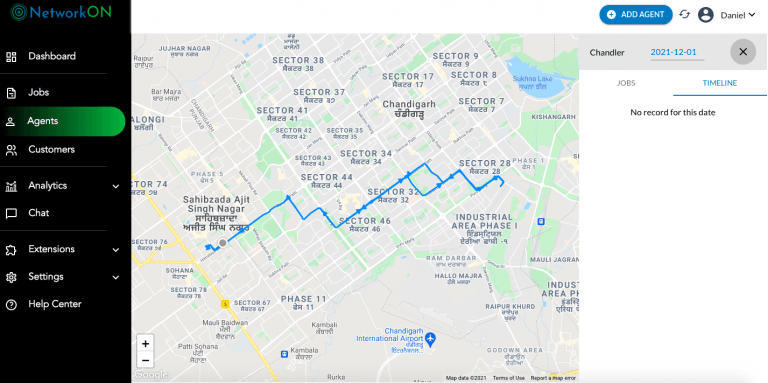
NetworkON is a dynamic delivery management software designed to streamline logistics operations. It offers real-time tracking, automated dispatch, and AI-driven route optimization, making it ideal for businesses seeking to enhance their last-mile delivery processes. Additionally, the software supports integration with various platforms and provides advanced analytics to optimize performance.
Pros:
- AI-powered route optimization enhances delivery speed and fuel efficiency.
- Seamless integration with other platforms like CRM and ERP systems.
- Real-time tracking and notifications boost customer satisfaction.
Cons:
- Advanced features may require a learning curve for smaller teams.
- Can be expensive for startups due to pricing models that cater to large-scale businesses.
2. Route4Me
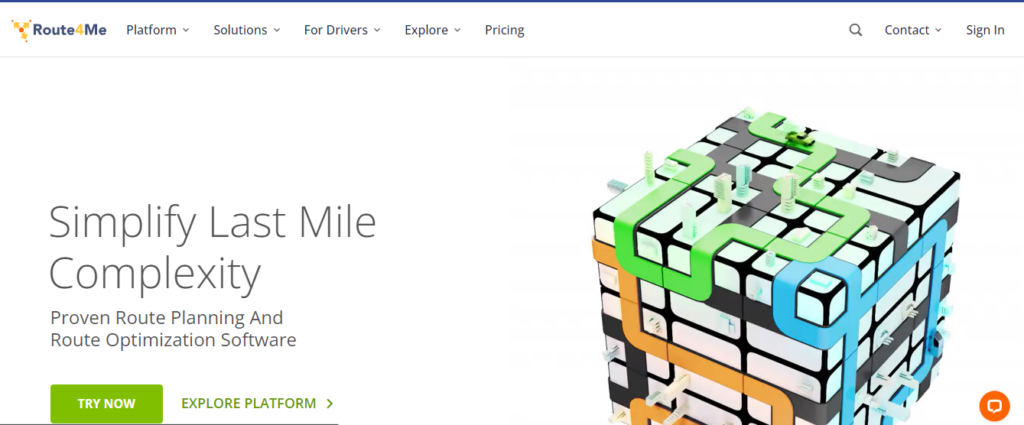
Route4Me is versatile route optimization software designed to simplify logistics planning for small and large businesses. It offers drag-and-drop route scheduling, real-time GPS tracking, and support for multiple drivers and stops per route.
Pros:
- Easy-to-use drag-and-drop scheduling, perfect for small businesses.
- Optimizes routes for multiple drivers and stops, saving time and fuel costs.
Cons:
- Limited customer support options are available for free or basic plans.
- Mobile app usability can be inconsistent, causing potential delays.
3. Onfleet
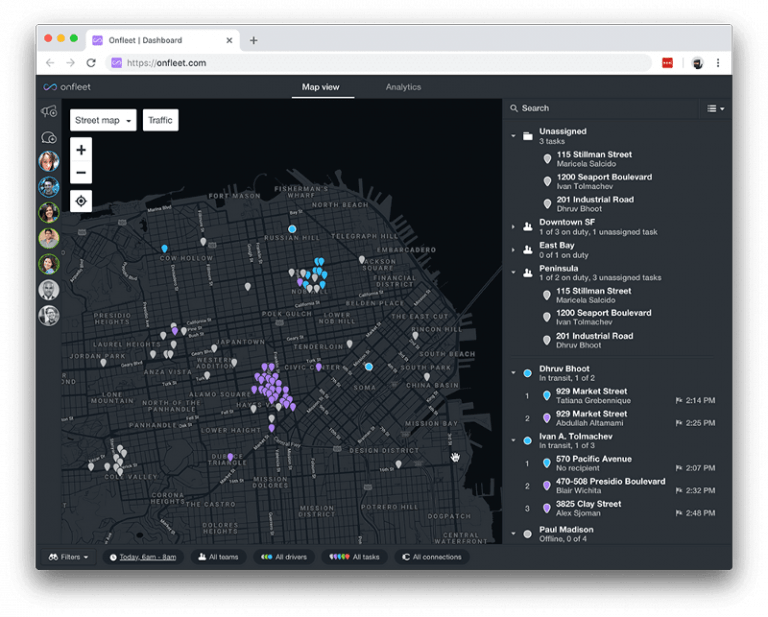
Onfleet is a popular delivery management platform that helps businesses automate dispatch, optimize routes, and provide real-time driver tracking. It also features proof-of-delivery and driver performance analytics.
Pros:
- Sleek, user-friendly interface with advanced features for real-time tracking.
- Comprehensive driver performance analytics and proof-of-delivery options.
Cons:
- Can be overkill for very small businesses with simple delivery needs.
- Higher pricing compared to other software, especially for more advanced features.
4. Track-POD Proof of Delivery
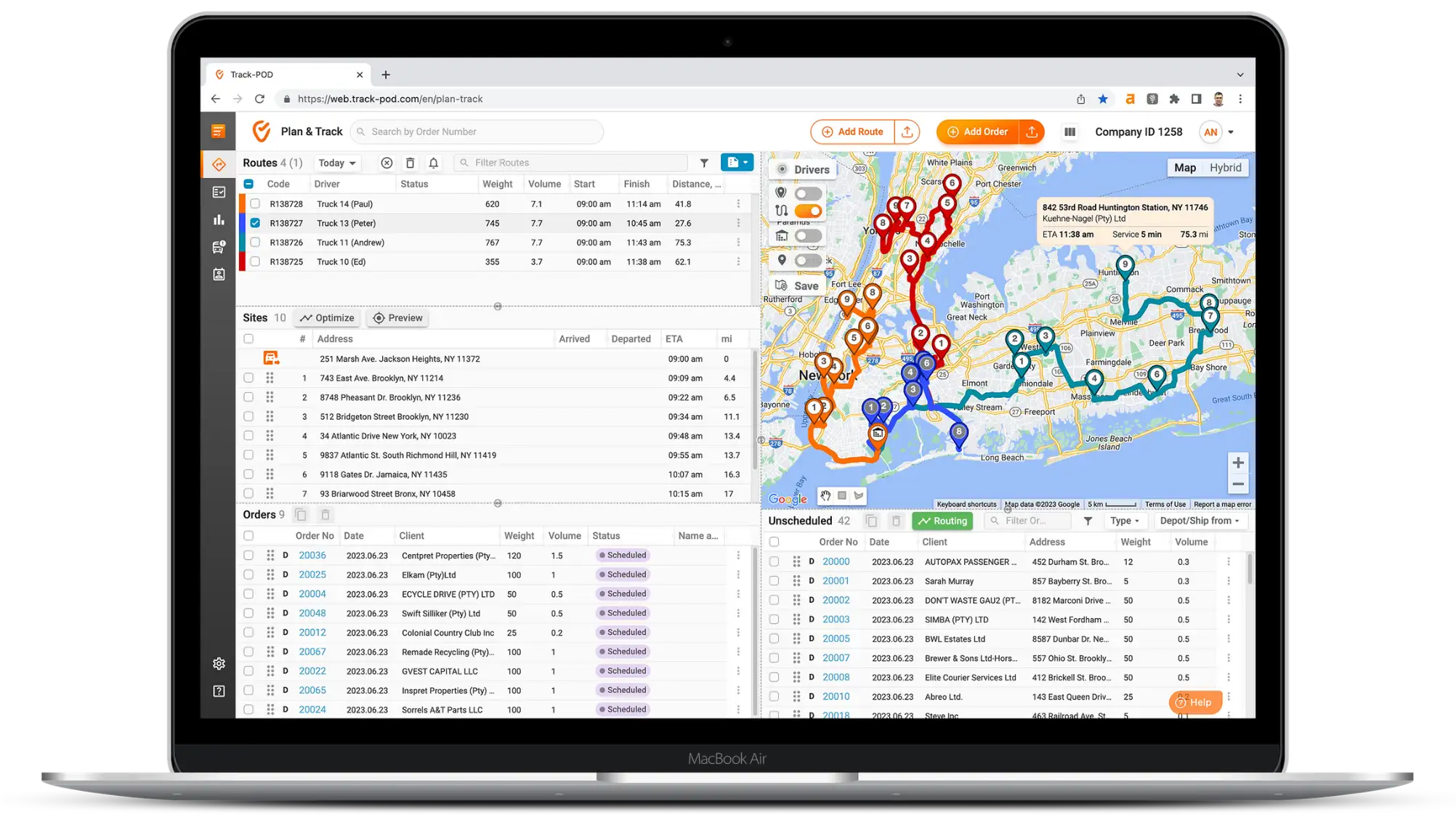
Track-POD is a delivery management software focusing on electronic proof of delivery (ePOD). It offers real-time tracking, driver management, and paperless proof of delivery through digital signatures and photos.
Pros:
- Excellent proof-of-delivery feature with digital signatures and photo capture.
- Cost-effective solution with robust delivery management capabilities.
Cons:
- Limited integration options compared to competitors.
- Reporting features may not be as comprehensive for small businesses looking for detailed analytics.
5. OptimoRoute Inc.
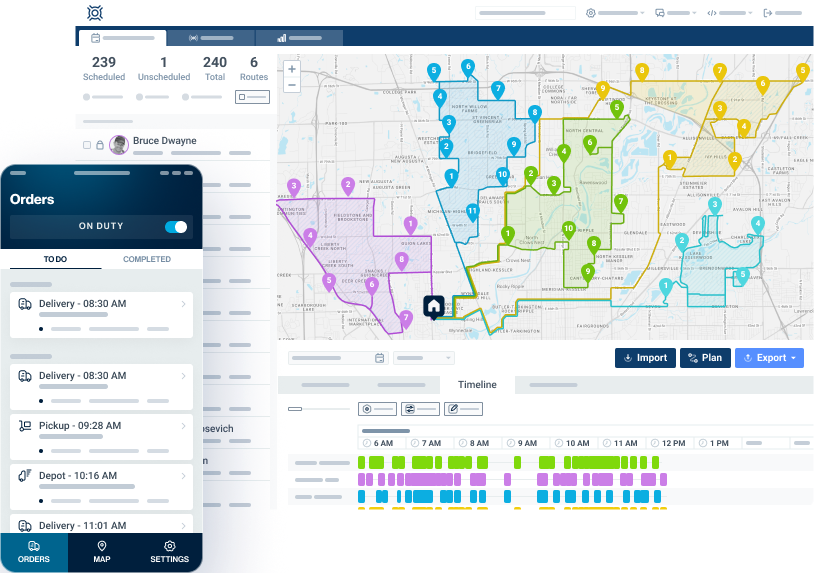
OptimoRoute is route planning software that helps businesses optimize routes, assign deliveries, and track their fleet in real-time. It’s designed to reduce delivery times and improve efficiency for businesses of any size.
Pros:
- Highly flexible for businesses with fluctuating delivery schedules.
- Provides route optimization based on delivery windows, improving punctuality.
Cons:
- No free plan, limiting access for very small businesses or startups.
- The interface could be more intuitive for beginners.
6. Routific Driver
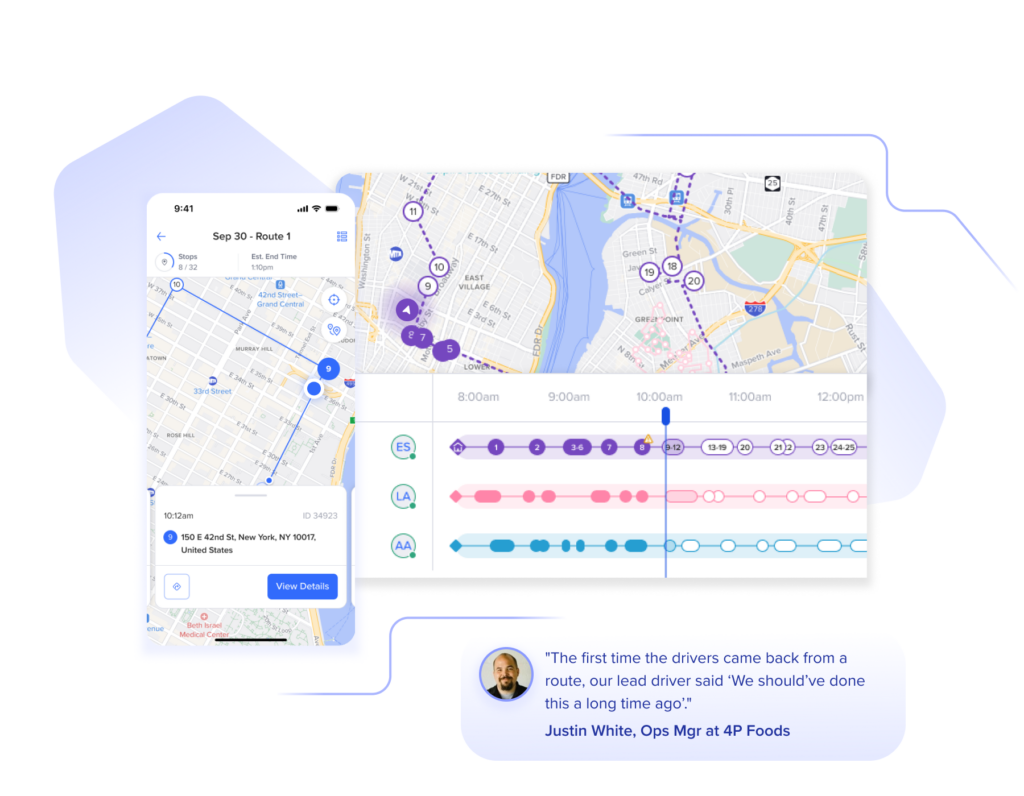
Routific is a delivery management platform that simplifies route planning and driver management. It offers real-time tracking, route optimization, and features like delivery time estimation to improve overall efficiency.
Pros:
- User-friendly with a clear focus on route optimization and driver efficiency.
- Accurate delivery time estimation, improving customer satisfaction.
Cons:
- Lacks some advanced features like extensive analytics or driver behavior tracking.
- Customization options are limited compared to other platforms.
7. Tookan
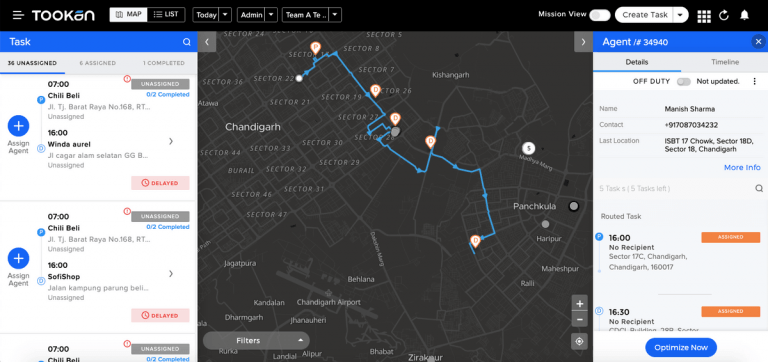
Tookan is a delivery management platform tailored for small and medium-sized businesses. It offers route optimization, real-time tracking, task automation, and analytics to enhance last-mile delivery services.
Pros:
- Affordable pricing, making it accessible for small businesses.
- Multi-functional with task automation, tracking, and route planning in one platform.
Cons:
- Can be overwhelming for users looking for a simple solution due to numerous features.
- Occasional delays in GPS tracking updates could affect delivery accuracy.
This variety of delivery software provides small businesses options depending on their size, budget, and specific operational needs.
Top Benefits of Utilizing Delivery Management Software
Understanding the advantages of delivery software for small businesses opens doors to elevated service standards and operational excellence. With this technology, customer satisfaction rises as delivery services become more timely and reliable. Providers fulfilling orders with precision retain customers and incite positive feedback, which fuels business growth.
Enhanced Customer Satisfaction
Delivery management software ensures customers receive their products promptly. Reliable delivery is a service expectation and a benchmark that distinguishes a business in a crowded marketplace. Automated notifications and real-time tracking fortify trust between the business and its clientele.
Streamlined Operations
For business managers and owners, delivery software for small businesses consolidates numerous functions into a single interface, simplifying day-to-day tasks. This integration allows for a more fluid management process, minimizing the potential for human error and enhancing overall efficiency.
Uptick in Drivers’ Efficiency
Drivers benefit from delivery software for small businesses through automated tools that assist route planning and order management. Such tools reduce time spent on administrative duties, allowing drivers to focus on the actual delivery. This results in more deliveries per day and less stress on the workforce.
Improved Logistics Coordination
The systematic and synchronized features inherent in modern delivery software facilitate coordination within the logistic chain. Every step from the warehouse floor to the customer’s doorstep is tracked and optimized for fluid delivery execution, resulting in a seamless operation.
- Automated dispatching simplifies assigning orders.
- Inventory levels link directly to order processing, preventing stock-outs
- Analytics provide insights for refining logistical strategies
By amplifying driver productivity and equipping managers with robust operational tools, delivery management software is pivotal for small businesses striving to outperform competition and foster long-term growth.
Pro Tip: Utilize delivery software for small businesses to boost efficiency and customer satisfaction. Automate route planning, streamline dispatching and provide real-time tracking to ensure timely deliveries and a seamless customer experience. This not only reduces human error but also enhances driver productivity, helping your business stay competitive and grow.
How Delivery Software for Small Business Empowers Growth
Delivery software for small businesses has become the linchpin for businesses seeking to expand their capabilities in an increasingly competitive market. This digital tool enhances efficiency and drives growth by streamlining delivery operations.
Automating Route Optimization for Faster, Cost-effective Deliveries
Businesses benefit from delivery software’s ability to automate route planning. This guarantees the quickest, most economical paths for shipments, slashing fuel costs and time on the road. Consequently, businesses can complete more deliveries in less time, directly boosting their bottom line.
Utilizing Real-time Data to Make Informed Decisions
With access to real-time analytics, business owners gain insights into their delivery operations. This enables proactive strategies to address unexpected roadblocks and swiftly pivot operations. Real-time data helps identify trends, monitor performance, and fine-tune tactics for improved outcomes.
Scalability Features for Growing Businesses
Scalability is at the heart of delivery software for small businesses, ensuring that as a business grows, the software adapts seamlessly. Small businesses can start with basic features and scale up as their delivery volume increases without significant new investments in software infrastructure.
Integration Strategies for Seamless Operations
Seamless integration of delivery software with existing business systems transforms operations, fostering a robust and responsive delivery ecosystem. Adequate alignment with inventory and order management frameworks is not simply beneficial; it guarantees consistent and accurate data propagation across platforms, enabling real-time decision-making.
Aligning Delivery Software with Existing Inventory and Order Management Systems
Successful integration commences with the coherent synchronization of delivery software and existing inventory systems. This synchronization facilitates instantaneous updates on stock levels and order statuses, leading to a profound improvement in delivery fulfillment accuracy. Involve stakeholders from all relevant departments to ensure that data flows unhindered between systems, optimizing the supply chain.
Customizing the Software to Fit Unique Business Needs
Every small business has distinct operational methodologies and customer service objectives. Tailoring delivery software to align with these unique business imperatives enhances efficiency and ensures the software delivers maximum return on investment. Explore customization options ranging from user interface adjustments to specialized reporting functions to meet specific industry needs.
Achieving Integration with Minimal Disruption to Services
Preserving service continuity during software integration is critical. Strategically plan the rollout of the new delivery software to mitigate any potential service interruptions. Employ a phased approach, prioritizing core functionalities first, followed by additional features, to ensure a controlled and smooth transition. Provide comprehensive training to all users before full-scale implementation to minimize operational disruptions.
Real-time Solutions: Tracking and Dispatch
Delivery software equips small businesses with the capability to offer customers visibility into the delivery process. Real-time tracking allows customers to see the live location of their packages, which enhances trust and reliability in the service provided. This transparency reduces customer service queries about the whereabouts of their deliveries.
Dispatch solutions are pivotal in streamlining the delivery process. They empower businesses to assign drivers to packages efficiently, leading to quicker delivery times. By using dispatch features, businesses can ensure that drivers take the most effective routes and deliver packages promptly.
Robust communication channels are the backbone of a successful delivery operation. Direct connectivity between customers, drivers, and managers facilitates immediate resolution of potential issues. This connectivity also helps make real-time adjustments to delivery routes or schedules, thus providing flexibility and enhancing overall service quality.
- Real-time tracking fosters an environment of accountability and punctuality, as drivers know their progress is being monitored.
- Dispatch features in delivery software reduce the margin of error in manual planning and assignment tasks, leading to more accurate and efficient operations.
- Dynamic communication channels allow drivers to provide real-time updates, which can include traffic information, delivery confirmations, and on-the-fly adjustments.
Route Optimization: A Roadmap to Efficiency
Automated route planning significantly reduces delivery times and costs. Advanced algorithms analyze multiple factors, such as traffic patterns, distances, and vehicle capacity, to generate the most efficient travel paths.
Small businesses reap substantial benefits from route optimization. Consider a florist who integrates this technology to schedule deliveries. Previously, the route was planned manually, leading to longer transit times and higher fuel expenses. With optimized routing, the florist not only economizes on fuel costs but also increases the number of daily deliveries, enhancing business capacity.
Route optimization serves more than just cost reduction; customers experience prompt service, fostering loyalty. A bakery that implemented route optimization observed that customers appreciated the consistent and timely delivery, resulting in positive feedback and repeat orders. Such real-world examples underscore the potential gains small businesses can achieve through the strategic use of delivery software with route optimization capabilities.
- Streamlined delivery operations maximize driver time on the road.
- Efficient routing leads to reduced vehicle wear and tear.
- Investing in route optimization tools opens opportunities for scalability.
With every calculated mile and shaved minute, route optimization propels small businesses toward greater efficiency and economic engagement.
Delivery Software and Customer Satisfaction: A Direct Connection
Delivery software fundamentally transforms business-customer interactions. With precise coordination, businesses equip themselves to meet and exceed customer expectations, leading directly to heightened customer loyalty. Timely and accurate deliveries, a benchmark for successful customer relations, hinge on the efficiency and reliability of the delivery software.
Providing estimated delivery times has shifted from a courtesy to an expectation. When companies deliver on this expectation, trust builds in the customer relationship. The modern consumer seeks transparency; therefore, the ability to offer real-time updates meets this demand and elevates the customer experience. This proactive communication reassures customers, allowing them to plan around the delivery, thus ensuring a smooth transaction.
- Customers remember businesses that provide a seamless delivery experience, and they often reward them with return business and referrals.
- In the event of a delay, a company’s communication immediacy can preserve and even strengthen customer trust.
Using software that integrates real-time tracking, businesses empower customers with knowledge. This autonomy in monitoring delivery progress can significantly reduce customer anxiety, and the volume of customer service calls questioning delivery status.
When businesses leverage delivery software effectively, they optimize their logistical operations and create a compelling service quality that customers appreciate. This appreciation is expressed through repeat sales, positive reviews, and an expanding base of loyal customers who value such software’s reliability and transparency.
Mobilizing Your Delivery Services
In the dynamic arena of delivery operations, mobile applications for drivers are critical to success. These applications accommodate the on-the-go nature of delivery work, directly equipping drivers with essential tools such as navigation, communication, and task management on their smartphones or tablets.
Customers expect convenience at their fingertips, and the provision of a mobile app interface fulfills this expectation. Through such interfaces, customers can place orders, track deliveries, and communicate with couriers, fostering a transparent and responsive service experience. A mobile app serves as a bridge, connecting customers with their delivery needs to the efficiency of your operations.
- Drivers leverage mobile apps to receive real-time updates, reducing the likelihood of delays and errors.
- GPS technology within apps assists with route planning, facilitating quicker deliveries.
- Mobile interfaces enable customers to customize delivery times, enhancing satisfaction.
Together, these mobile solutions expedite delivery processes and amplify customer engagement by providing a platform for interaction and feedback. As businesses adopt mobile-centric strategies for their delivery services, they witness measurable gains in operational agility and customer loyalty.
Cost-Effective Delivery Software Solutions for Budget-Conscious Businesses
Determining the balance between affordability and functionality forms the cornerstone of procuring delivery software for small businesses seeking budget-conscious solutions. Prospective buyers should investigate options that maintain a standard of excellence while aligning with financial constraints. Various software solutions cater to small businesses by offering competitive pricing structures without compromising essential features, ensuring that operational efficiency and customer satisfaction are upheld without straining financial resources.
Analyze the cost-to-feature ratio meticulously to ensure the investment will yield tangible long-term advantages. Subscription-based models might include updates and customer support, thereby reducing the need for additional expenditures over time. Proactively seek packages that include route optimization, real-time tracking, and customer communication channels as part of the core offerings. While streamlining daily operations, these features also contribute to amplified customer satisfaction and retention.
- Examine software offerings with scalable pricing plans to accommodate business growth without steep increments in cost.
- Study user reviews and testimonials to gauge the software’s performance relative to cost.
- Consider the potential return on investment that efficient delivery management software can bring through fuel cost savings, improved delivery times, and higher delivery volume capacity.
- Focus on solutions designed with a user-friendly interface to minimize training requirements, which translates to saved time and resources.
When evaluating cost-effective software solutions, remember that upfront savings on cheaper options may not always lead to lower costs in the long run. Deferred upgrades, inadequate support, and missing critical features can result in hidden expenses. Thus, when selecting delivery software, aim for those that promise a confluence of economic viability and robust functionality tailored for small businesses aspiring to fortify their delivery operations without compromising their budgetary boundaries.
Pro Tip: Opt for delivery software with scalable pricing and built-in features like route optimization and real-time tracking to maximize ROI while keeping costs in check.
Scaling Your Delivery Operations with the Right Software
As businesses evolve, their delivery operations must evolve as well. A spike in order volume, expansion into new markets, or increased delivery routes signal the need for scaling. Adopting delivery software that scales with your business is essential for continued growth and efficiency.
Delivery software designed to accommodate growth provides the flexibility to add new delivery routes, manage an increasing number of drivers, and handle a higher volume of orders without compromising on speed or customer service. With scalable delivery software, businesses can expect seamless performance even as their delivery demands intensify.
- Software scalability ensures that as order volumes grow, the system can handle the increased data without reducing performance.
- Flexible subscription models allow businesses to pay for only what they need, with the option to upgrade as they expand.
- Scalable delivery software often includes advanced features like AI-driven route planning and predictive analytics to further streamline operations.
Adopting scalable delivery software enables businesses to manage their current operations efficiently and lays the groundwork for future expansion. With the right tools, delivery operations transform from a possible bottleneck to a powerful growth accelerator.
Cloud-based vs. On-Premise: What’s Best for Your Business?
Deciding between cloud-based and on-premise delivery software can direct the trajectory of a small business’s logistics operations. Reflect upon both options’ unique attributes before cementing a decision.
| Feature | Cloud-Based Delivery Software | On-Premise Delivery Software |
| Cost Model | Subscription-based (monthly/annual fees) with scalable pay-as-you-go models | Requires significant upfront investment for software licenses, hardware, and infrastructure |
| Accessibility | Remote accessibility via web or mobile, increasing operational flexibility | Limited to in-house access unless specific remote configurations are set up |
| Maintenance and Updates | Vendor manages maintenance and automatic updates, ensuring constant innovation without additional costs | Internal IT team responsible for maintenance, updates, and ensuring system up-to-date |
| Scalability | Easily scalable to accommodate small and large businesses without high upfront costs | Requires additional investment in hardware and infrastructure for scaling |
| Security | Vendor-managed security protocols protect data | Physical control over servers and data increases perceived security, but internal team handles risks |
| Customization | Limited customization options, as most services are standardized | Complete control over customization to tailor the system to specific business needs |
| Initial Investment | Low initial costs | High initial capital expenditure for hardware, software, and IT support |
| Long-Term Costs | Pay-as-you-go model can lead to ongoing expenses but without large spikes in capital costs | One-time investment may offer long-term savings but requires ongoing IT and infrastructure support |
Factors to weigh include operational flexibility, initial investment and total cost of ownership, scalability, and data control needs. Cloud-based services enable rapid scaling, which can be critical for growing businesses, whereas on-premise solutions provide stability and control for those with the means to invest in infrastructure.
Security needs, especially in light of enhanced digital threats, demand careful examination. Cloud providers often have robust security measures; however, some businesses require extra assurance of in-house data storage.
Analyze your business’s size, growth trajectory, and specific needs. Peers in your network might share insights on their own experiences, and third-party reviews or consultations could provide an unbiased perspective. Remember, the right investment in delivery software will reformulate challenges into exponential growth opportunities for your small business.
Security in the Digital Age: Protecting Your Data
Delivery software for small businesses amplifies efficiencies but also opens up new vulnerabilities. Data security transcends mere compliance; it forms the backbone of customer trust and brand reputation. Small businesses, unburdened by extensive bureaucracy, can adeptly safeguard their operational and customer data by implementing strategic security measures.
Key Security and Privacy Considerations for Delivery Software
Assessment of delivery software for small businesses includes analysis of encryption standards, user access controls, and regular security audits. Encryption ensures that data transmitted over networks is unreadable to unauthorized users. Access controls prevent unauthorized entry, keeping sensitive information accessible only to those with explicit permissions. Security audits help identify potential vulnerabilities and ensure the continuous fortification of defense mechanisms against evolving threats.
Utilization of multi-factor authentication contributes to an additional layer of protection, reducing the likelihood of security breaches. This process necessitates more than one verification method, significantly decreasing the chance of unauthorized access.
How to Ensure Your Data and That of Your Customers Remains Secure
Safeguarding data begins with a solid foundation: choosing delivery software developed with robust security protocols. Education of staff about phishing scams and securing their devices, especially when using mobile applications in delivery processes, is non-negotiable. Regular backups protect against data loss, while a comprehensive privacy policy transparently communicates how customer data is treated and shielded.
Small businesses must foster partnerships with software providers that continuously update and patch their systems. Such updates address security loopholes that cybercriminals could exploit. Regular risk assessments and security training align the human element with technology, rendering a formidable defense against data breaches and cyber threats.
- Ensuring software vendors comply with international data protection regulations, such as GDPR for European customers, mitigates legal risks.
- Data encryption, both at rest and in transit, guards against unauthorized interception.
- Secure cloud services enable small businesses to benefit from high-level security protocols often unattainable with in-house capabilities.
- Adopting strong password policies and regular password changes constitute fundamental security practices.
Diligence in monitoring for suspicious activity cannot be understated. Automated alert systems can notify when abnormal data access or usage is detected, prompting immediate investigation.
In the quest for secure delivery software for small businesses, recognizing that security is a dynamic, not static, undertaking proves invaluable. Regular evaluation and adaptation of security measures ensure resilience in an ever-evolving digital landscape.
Key Takeaways
- Enhanced Customer Satisfaction: Delivery software improves transparency and reliability through real-time tracking, automated notifications, and prompt delivery, leading to higher customer satisfaction and loyalty.
- Streamlined Operations: Integrating delivery management software with existing systems simplifies workflows, reduces human errors, and improves overall efficiency.
- Optimized Route Planning: Automated route optimization reduces fuel costs, shortens delivery times, and allows businesses to handle more deliveries, boosting profitability.
- Increased Driver Efficiency: Delivery software empowers drivers by automating administrative tasks and providing real-time updates, allowing them to focus on timely deliveries.
- Scalability for Growth: Delivery software offers scalable solutions, enabling businesses to start with basic features and upgrade as delivery volumes increase, supporting long-term growth.
Wrapping It Up!
The right delivery software for small business is a transformative tool for advancing the operations of businesses. By implementing such solutions, businesses can expect a robust escalation in their growth trajectory. A small business’s willingness to adopt delivery management software signals foresight, ensuring it stays competitive in a bustling market.
Assessing the long-term advantages should be the focus, with recognition that initial expenditures are an investment in streamlining operations and amplifying profits. The profitability loop that begins with customer contentment and loops back through efficient service delivery cannot be understated.
Given that customer satisfaction remains pivotal in every business’s success narrative, integrating cutting-edge delivery software is no longer an option but a necessary step to exceeding customer expectations.
Are they meeting the expected milestones for efficiency and customer satisfaction? If the answer leaves room for improvement, consider how delivery software can bridge that gap.
Ready to take your delivery operations to the next level? Schedule a demo with NetworkON, the leading delivery software for small business providers. Witness firsthand how our innovative solutions can streamline your logistics, enhance customer satisfaction, and drive business growth.
Don’t miss the opportunity to see the impact NetworkON can have on your business success. Book your demo today and experience the future of delivery!
Frequently Asked Questions
Q1: What is delivery software, and how does it benefit my business?
Delivery software is a digital solution designed to manage and optimize the entire delivery process, from order placement to final delivery. It benefits businesses by improving efficiency, reducing operational costs, providing real-time tracking, and enhancing customer satisfaction.
Q2: Can delivery software integrate with my existing systems?
Yes, most delivery software platforms can easily integrate with your existing CRM, ERP, or eCommerce systems. This integration helps streamline workflows, reduce manual data entry, and ensure seamless operations.
Q3: How does delivery software improve route planning?
Delivery software uses advanced algorithms to automatically optimize routes based on factors like traffic, delivery windows, and fuel efficiency. This helps reduce delivery times, save on fuel costs, and increase the number of deliveries completed per day.
Q4: Is delivery software scalable for growing businesses?
Yes, delivery software is highly scalable. Whether you have a small or large delivery operation, you can start with essential features and add more advanced tools as your business grows and your delivery needs expand.
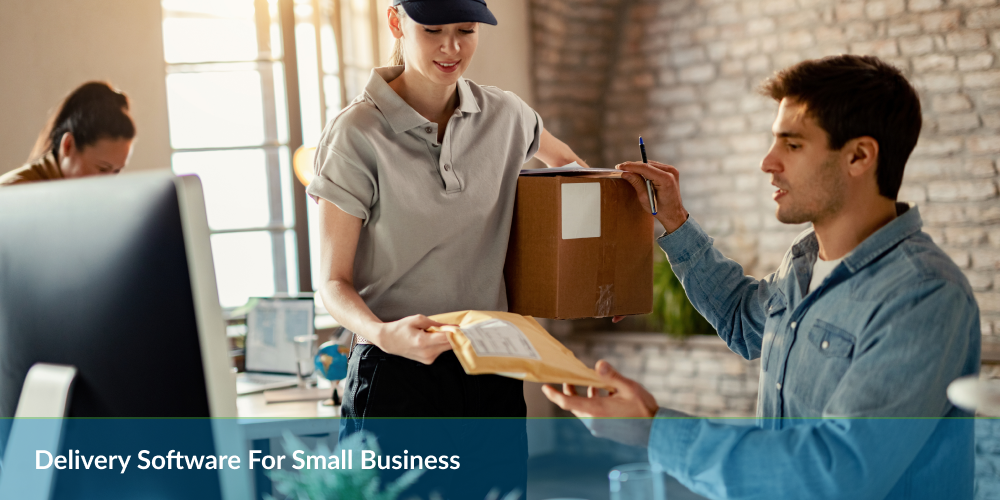




0 Conversations